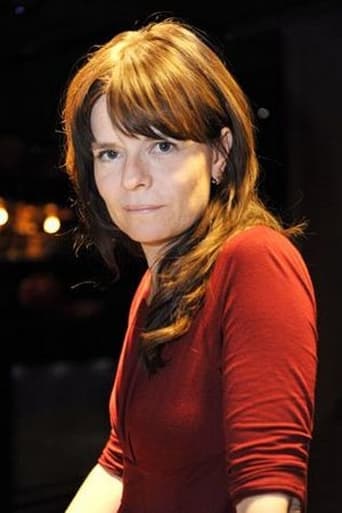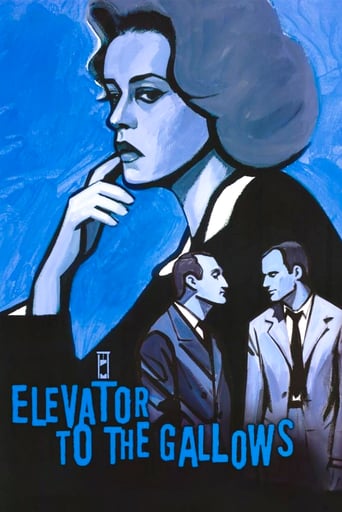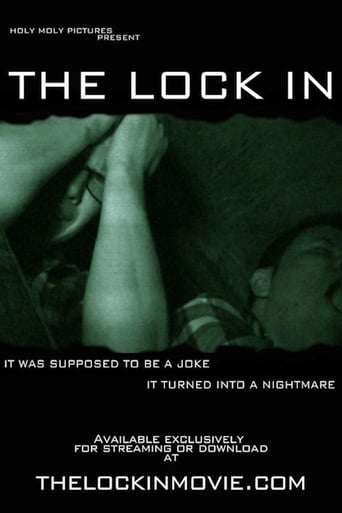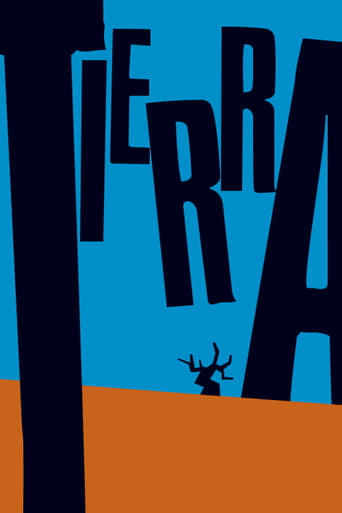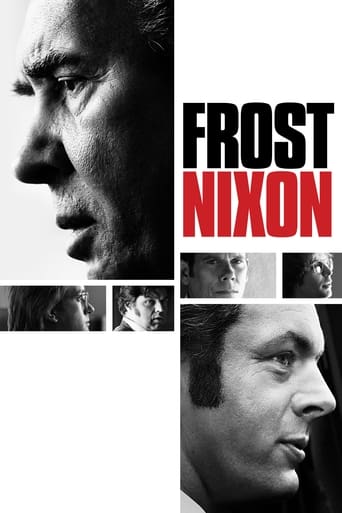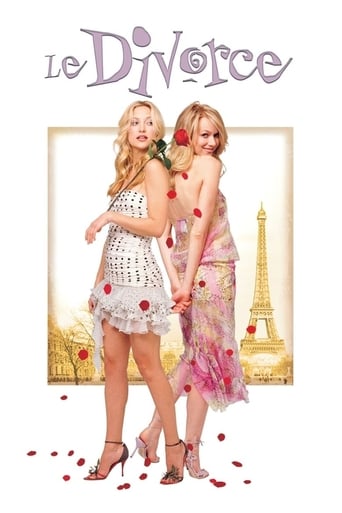
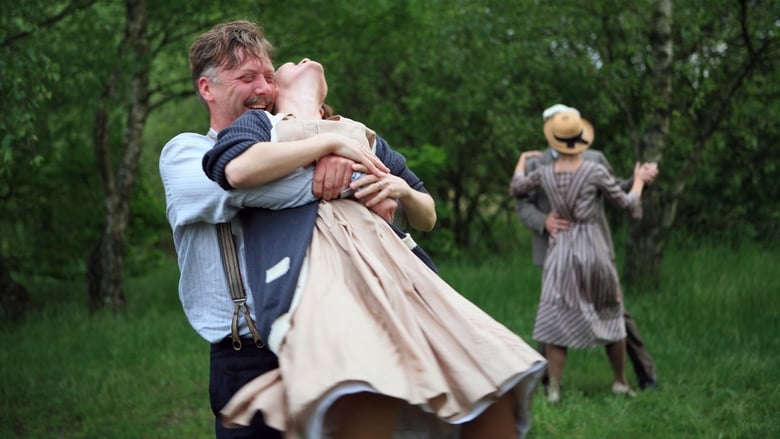
Everlasting Moments (2008)
In a time of social change and unrest, war and poverty, a young working class woman, Maria, wins a camera in a lottery. The decision to keep it alters her whole life.
Watch Trailer
Cast


Similar titles
Reviews
To me, this movie is perfection.
Excellent, Without a doubt!!
I cannot think of one single thing that I would change about this film. The acting is incomparable, the directing deft, and the writing poignantly brilliant.
There are moments in this movie where the great movie it could've been peek out... They're fleeting, here, but they're worth savoring, and they happen often enough to make it worth your while.
This is a beautiful and engaging story about Maria Larsonn. Her life, her passions and her family. It is a biography and though I loved it, I am not sure everybody will because it lacks the contrived dramatic moments and a big climax associated with such stories. Instead it is like life itself, stuff happens, more stuff happens and then you die. Well I hope I am not putting people off from watching this film because it is lovely film and deserves to be seen. I just wanted to remark and it is a little unconventional.Though it seems that photography will become an important part in Maria's life, don't expect it to. It is just there in the background.The plot itself is nothing much too talk about. It is more about the characters rather the plot here. Acting is certainly amazing which brings the characters to life.
There is a certain look, pace, feel and sensibility to the Swedish/Danish film-making style, particularly when depicting the horse and buggy era. This fine film by Jan Troell is a product of that aesthetic and brings to mind the work of other Scandinavian masters such as Ingmar Bergman, Bille August, Bo Wildeberg and Gabriel Axel. This is a story of simple people who struggle mightily against great odds, presented in such as way as to give us a visceral sense of their ordeals. Here is a director who can bring the distant past to vivid life and whose obvious love for his medium is reflected in the subject of the story he wrote himself. The period of the film is roughly 1907-1917 before Sweden became a social democratic welfare state and the story frequently touches on the class antagonisms that led to it. But there is virtually no point made in this film that lacks counterpoint, down to the very last line uttered before the closing credits. There are no easy answers here, no final, neat, beribboned conclusion that sends us away satisfied. Nothing sentimental to gush about, but something lasting, just as the film's title suggests.In form, the film is a grown woman's narrated memoir that wavers in emphasis from her father to her mother. The father (acted with textured skill by Mikael Persbrandt) is alternately magnetic and obnoxious, sensitive and brutish, depending on his whim. When he drinks, which he does on impulse despite best intentions, he is a terrifying, overbearing boor; when he is sober and in a good mood, he is the dream father - the charming, strong, fun-loving pillar of the family. But this family is not lucky enough to have the latter without major doses of the former. Luckily, the mother (superbly played by Maria Heiskanen) has her head firmly screwed on and not only manages to endure her husband's abuses while raising seven children in poverty but also finds time to learn how to use a Contessa camera which the narration tell us she won in a lottery shortly before she married. When, in a fit of financial desperation during a strike that finds her husband unemployed, she asks the gentle proprietor of a photography studio (Jesper Christensen) about the value of the camera, he compassionately persuades her not to pawn it but to use it. She allows him to coach her into mastery of this new-fangled device, thereby launching a hobby that helps make ends meet and adds luster to her grim tenement life while bringing joy and wonder to her family and neighbors. Even her husband eventually overcomes his initial grudge against her new preoccupation. The story seesaws from highs to lows, from bitter fights to tender reconciliations, from hopelessness to hope, with periodic moments of breathless suspense when life itself hangs by the slenderest thread. It depicts a society in transition, half in the Christian, semi-rural monarchic past and half in the secular, amoral, motorized future. In a sense, it is the story of Sweden itself. I couldn't help noting that the tenement shown in this film resembles the kind of building Greta Garbo was raised in. She was born in the same era, came from laboring parents and grew up to be absorbed by the new international technology of cinema, just as the heroine of this film is at one point enchanted by early motion pictures, to which she takes her children, leaving the grumbling, uncomprehending father to tend to his horse in the stable.The cinematography makes even poverty look beautiful (perhaps a bit too much so) and each character is achingly well acted by a very well directed ensemble. The pace is rather slow, but there is so much to care about that the viewer willingly waits patiently for one scene to flow into the next. All in all, an outstanding work that seems to embody the very spirit of its own story – the everlasting moment captured by a camera in the hands of someone with the great gift of seeing.
What a gorgeous poster, and frankly a gorgeous film despite its hard look at love conquering abuse, alcoholism, and the shattering of dreams. Sometimes two people find themselves forgiving each other, not out of weakness, but out of the underlying powerful love bonding them. Academy Award nominee Jan Troell's new film Maria Larssons eviga ögonblick, or Everlasting Moments here in the states, is a slow unveiling of what it was like to live in Sweden as a below Middle Class citizen, striving to feed your seven children and attempting to survive. It pulls no punches and shows life in all its dirty ways, engrained in the memories of all involved and displayed on film for our viewing, much like the photographs taken by Maria Heiskanen's Maria Larsson. These photos prove to her she is worth something in this world, showing her a talent that is unappreciated by her cheating husband, but viewed as magnificence from her tutor and friend Sebastian Pederson, (Jesper Christensen), and those in the town she lives, even helping to support them when times are tough.Sometimes that admiration trickles down and changes people like her brutish husband, played by Mikael Persbrandt, and sometimes that change happens too late. So much occurs to make you angry with Maria for not leaving Sigge after any of the numerous chances he gives her. Following his drunken verbal lashes, his jealous rages forcing himself on her, or even his threats of murder with a knife against her neck, she always looks at him and finds that love she fell for years ago. When he comes back from jail sober and rested, he is a different man, but each time temptation ruins his redemption. Whether her father's declaration, upon Maria asking permission to divorce him, of "you will be together until death do you part" lingers at the back of her head or not, she always finds forgiveness. Her children grow up to realize what is happening between the two, even questioning her reasons for staying as well. It is a different time and having so many mouths to feed in a poor neighborhood negates some options. It is only in her camera, a fine Contessa, is she able to escape into a frozen reality where a smile stays forever. She wishes one day her life can remain static in that state as well, never falling back into the violence her Sigge is so capable of providing.One may argue that the film portrays a weak woman staying with an abusive man, but I believe the story is more complicated than that. Sure Sigge is a horrible specimen of a human, without fail, but there is goodness inside of him. The pressures and stress of the times weighs heavy on everyone, yet manifest into anger when he can't quite handle it. Everlasting Moments becomes a study of love bonding together two people despite every worldly attempt to separate them forever. You almost begin to root for the Larsson family to survive it all, because you begin to see what could be.What really works above all else is the style. What at first seems very straightforward soon becomes seen as a very specifically shot film. With muted tones you begin to feel as though you are spying on photographs from the start of the 20th century. I also loved the moments when we get to see the photos that Maria and Pedersen take, even at times looking through the viewfinder at the upside-down image being sent through the camera. Even a throwaway moment of Pedersen showing Maria a moth/butterfly through the lens of the camera against his hand becomes a moment of beauty. Every detail is meticulously placed and included, all becoming a part of a fully fleshed world once the characters begin to move around in it. Heiskanen is fantastic as Maria, coping with the troubles of her husband, expressing the happiness she feels behind her camera or with Pedersen, and embodying the maternal love for her children. Persbrandt is a revelation as well, playing Sigge. The children nail it correctly when saying he reminds them of the bad guy in Charlie Chaplin's film, but his ability to navigate the emotional parts, to have that tear roll down his cheek or to hold his dead friend in his arm, even the jubilance of seeing his horse still in its place once he returns from jail one last time, really show the man he is deep inside, beneath the hard exterior.Jesper Christensen is my favorite, though—an enigma to the proceedings. Is he a wishful suitor for Maria or just a man who desires talent? How much of his helping her pay for supplies stems from his feelings towards her or his eye in seeing the skill and potential to be a professional photographer? It's a wonderful scene at the end, one after we see the two of them in an exchange that hints at burgeoning love, where the unwritten and impossible love between them is shown. The camera bonds them forever; it was just bad timing that won't allow them to ever be together. This relationship is an important affair of the mind; one she needs to cope with the affairs of the flesh Sigge has behind her back. Their stolen moments together in the darkroom developing photos can almost be seen as more romantic than any she shares with another during the course of the film. They become her own everlasting moments, imbedded in her mind like the images held still on her developed stock. Maria Larssons eviga ögonblick may be long and trying at times, but for all the filler, the moments that work make it a worthwhile journey to take, watching the many forms of love and how when it seems all but lost, it rekindles and burns once more.
I have an old photograph of my mother when she was five years old walking down the Boardwalk in Atlantic City in 1930 with my grandparents and I often wonder what their lives were like at that moment in time. Jan Troell's "Everlasting Moments" attempts to do just that as he brings old family photographs to life in his sweeping family saga set in Sweden at the turn of the century.Everlasting Moments begins in the Swedish port city of Malmo in 1907. It's a true story based on the reminiscences of Maja Larrson who is the film's narrator. She takes us back to when she was a child and we're introduced to her parents Maria and Sigfrid (Siggie) Larrson. Siggie is a dock worker who also happens to be an alcoholic. Maria (wonderfully played by Maria Heiskanen) is his long-suffering wife. Although Siggie belongs to the Temperance Society he is continually relapsing and most of the tension in the film's first half revolves around the harrowing scenes of domestic violence in which Siggie uses his wife as a veritable punching bag.Maria is under tremendous pressure, not only from the heartache of having to deal with her often drunk and philandering husband but also raising a brood of precocious children. One day Maria rediscovers an expensive camera that she and her husband had won in a lottery at the time they got married. She decides to take a picture of her children without her husband knowing about it and brings it to a local photography shop and meets the kindly shop owner, Sebastian Pedersen. Pederson is a bit older than Maria but they soon form a lasting friendship. Pedersen eventually shows Maria how to use the camera and develop pictures.Meanwhile, we get a real feel for the history of the times as we see what happens to Siggie as he becomes involved with Socialist and Communist agitators who seek to unionize dockworkers in their fight against the shipowners. At one point British scabs are brought in and one of the strike breakers is murdered. Siggie is a suspect for a short while but is cleared after a local floozy who he's been having an affair with provides an alibi.To Siggie's chagrin, Maria presses forward with her fascination with photography. Eventually she starts earning extra money taking photos of people in the community. In one sad and sensitive scene, Maria declines to charge a woman who asks her if she could take a picture of her daughter who has just died after falling through the ice wandering too far out on to a not so frozen pond. The image of the deceased girl is one of the many striking images of still photography seen in this film.Things come to a head when Siggie suspects that Maria has been having an affair with Pedersen and brutally rapes her. As a result, Marie is pregnant with another child who ends up with polio. Finally, Siggie takes things too far and drags Maria outside and almost slits her throat with a knife. As a result, he's arrested and thrown in jail (presumably there were neighbors who were witnesses to this horrible act but we never see them nor are there any scenes of Siggie being arrested and brought before a magistrate).While I expected Maria to leave her husband and go off on her own running her own photography business, that's not what happens in the film's denouement. Instead, Maria stops taking photos for quite awhile and loses contact with Pedersen after the family moves to a different part of town. After Siggie gets out of jail, Maria decides to stick it out with him. Some say it was Maria's memories of her father exhorting her never to leave her husband since it was "God's will" or perhaps it was simply Maria's conservative nature. More likely it was Siggie eventually becoming more mature. He gives up the bottle, starts running a successful moving company and becomes a decent family man. It should be pointed out that Siggie is only a monster when he's drunk. Other times he's shown to be a sensitive man (in one scene, he prevents a man from abusing a horse in the street).Maria's farewell to Pedersen is a poignant and bittersweet moment in the film. The two part knowing that their relationship was never meant to go further than it did. Pederson's shop is like an oasis for Maria while she's trying to cope with her husband in the early years. Although Pedersen is not a very 'exciting' character, and there's little conflict between the two, he's a soothing and supporting presence, contrasting nicely with the brutal and oppressive Siggie.Some of the other characters in the film are not sufficiently developed. Siggie's 'anarchist' buddy who commits suicide due to an fulfilled life is one such character. Maja, the film's narrator, has a brief scene where she's almost molested by an employer while working as a housekeeper and then there's the youngest son who's briefly seen trying to cope with the ravages of poliothese characters and scenes seem almost like afterthoughts.Nonetheless, 'Everlasting Moments' is still filled with indelible, everlasting moments and images (especially check out the effect that Charlie Chaplin had on the Larrson familythat's a scene you won't forget!). Jan Troell's look into the past is not sentimental but more wistful. And even more important, he teaches us about the trials, tribulations and the sacrifices made by the older generation as they stumbled into a firm and rewarding maturity.


